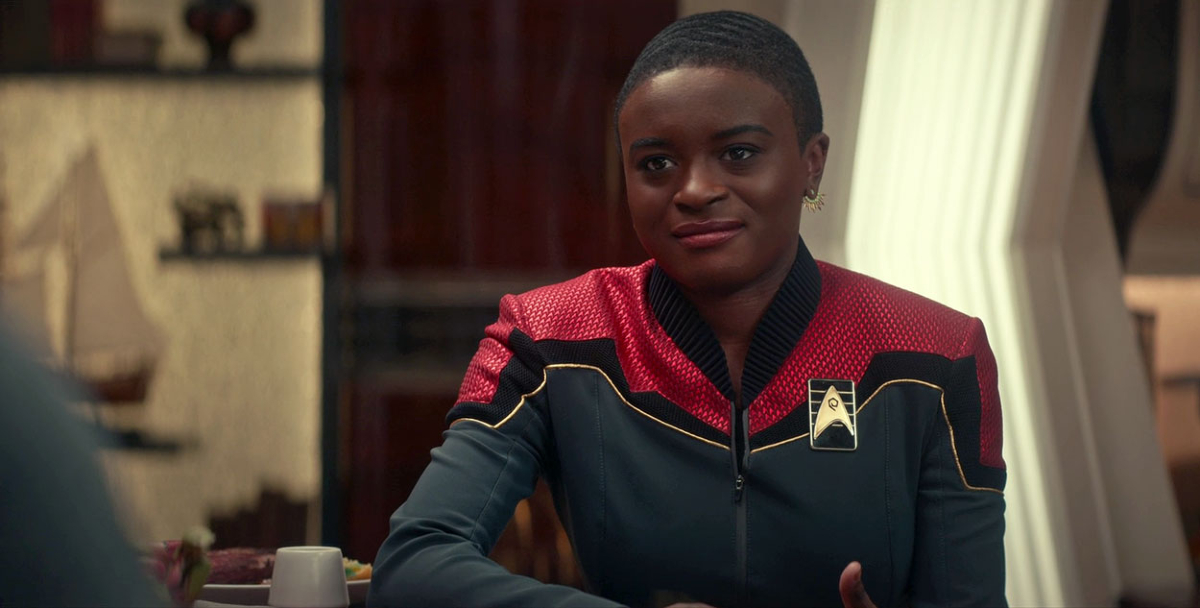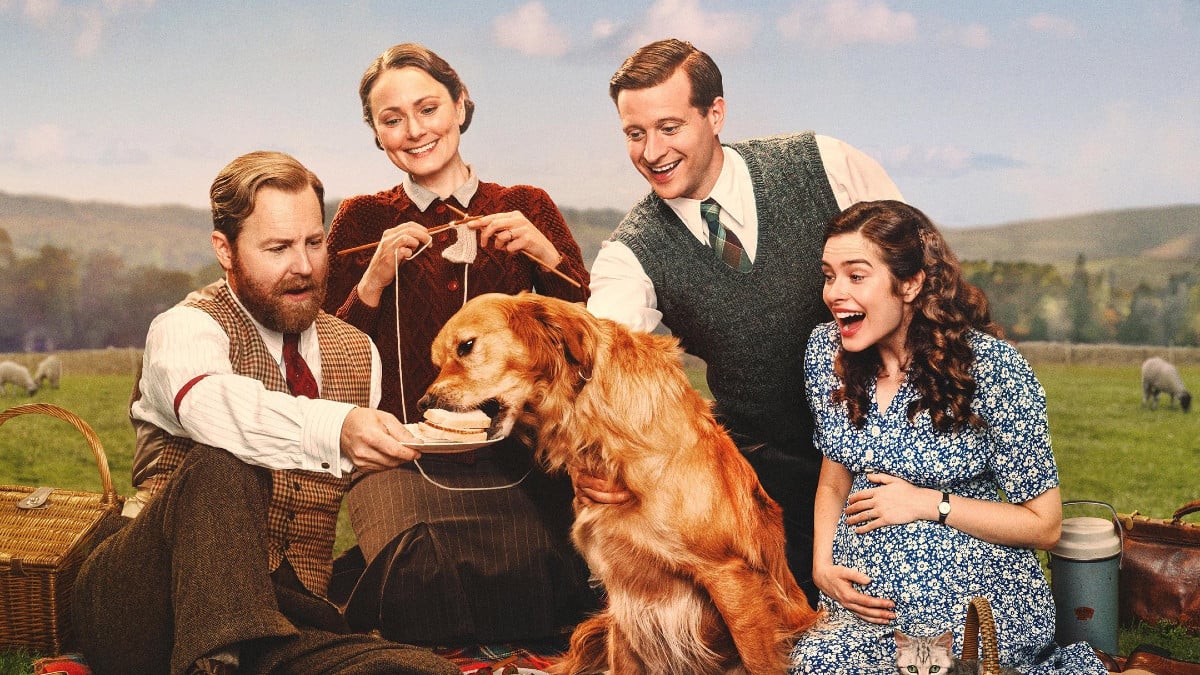The iconic Lt. Uhura has gone through several recasts and retcons over the years, along with the rest of the original Enterprise crew from Star Trek: The Original Series (TOS). First played by Nichelle Nichols, and then Zoe Saldana in the Kelvin-verse reboot, the torch has now passed to Celia Rose Gooding in Star Trek: Strange New Worlds (SNW). But who is this version of Uhura, which continuity does she belong to, and what are the things that set her apart from her predecessors and flesh out the canon of an already brilliant character?
Continuity
Star Trek: Strange New Worlds exists in the prime timeline, meaning that Cadet Uhura from SNW is a younger version of TOS‘ Lt. Uhura (Nichelle Nichols) rather than the Kelvin-verse’s Uhura (Zoe Saldana). Given the point at which the timelines diverge into the prime universe and the Kelvin-verse, and that SNW takes place in the years immediately after Nero’s assault on the Federation in the other timeline, you could say that Saldana and Gooding’s Uhuras are directly parallel versions of the same woman; with the movies providing an almost Marvel’s What if…?-style vision of how Uhura adapts and changes in response to different circumstances.
Of course it’s also possible that SNW actually exists in its own, third timeline, as theorized by Eric Diaz over at Nerdist. It’s a very Schrodinger’s cat/quantum physics sort of situation—the idea that by observing his future (in the Star Trek: Discovery episode “Through the Valley of Shadows”), Pike has already changed it, and other changes may follow on from there. It’s a fascinating idea, and I’m not sure how I feel about it, but it also won’t affect the canonicity of any details SNW has added to Uhura’s backstory, as they predate Pike’s encounter with the time crystals. Anything that happens post-series start however? That’s all up in the air, depending on which way the writers go with this, and if there’s one thing Star Trek has been doing to us lately, it’s surprising us.
Joining Starfleet
One thing SNW has been praised for is delving deeper into the backstories and motivations of characters who were largely relegated to supporting cast. We now know that Uhura joined Starfleet not because of her own dreams or ambitions, but because a personal tragedy derailed them and left her in need of a new path in life. Originally intending to study xenolinguistics at the University of Nairobi, where her parents taught, Uhura lost both of them and her older brother to a shuttle accident shortly before matriculating. Distraught and unable to face the idea of spending the next few years somewhere filled with memories of her parents, she withdrew from her course of study and moved in with her grandmother for a while to figure out her next steps. Inspired by her grandmother, a retired Starfleet officer, and feeling like she didn’t fit in anywhere on earth, Uhura joined the academy and excelled, performing well enough to secure a coveted spot on the Enterprise. Despite this, she was still unsure of whether Starfleet was really the right choice for her when she first appeared on the show, or if she was just running away from her pain and hadn’t found her “true purpose yet.”
Life before the Enterprise
Though still only a cadet, Uhura has already served on at least one other ship before being assigned to Pike’s Enterprise: the USS Gallant. During her time there, several crewmen died, leading to her wearing a pin that commemorates them and their loss on Remembrance Day in SNW: Memento Mori. Though we don’t know the circumstances, her assertion that her life has never been in danger before (made during SNW: Children of the Comet), suggests it was either the kind of localized accident that commonly occurs in areas such as engineering, or happened during an away mission she wasn’t on. Nonetheless, even though Uhura hadn’t been at risk herself, the loss of her crewmates only exacerbated her uncertainty about Starfleet and whether it was where she truly wanted to be.
37 languages and counting
A common criticism levied at the TOS writers, and one that was shared by Nichelle Nichols herself, is that they failed to make proper use of Uhura’s character or showcase her skill set—often relegating her to a background presence, and the phrase “hailing frequencies open.” While the character was created by Roddenberry as a gifted linguist, the show does such a bad job of conveying it that some viewers have even come away with the impression that Uhura only speaks one or two languages. Though TOS Uhura is canonically a polyglot, the exact number of languages she speaks is never specified, and the only two we know for sure are English and Swahili, with her minimal grasp of Klingon a plot point played for laughs in Star Trek IV: The Undiscovered Country.
SNW‘s Uhura comes in and smashes this misconception from the get-go. When Pike incorrectly tells the other dinner guests in SNW: Children of the Comet that Uhura speaks 12 languages, she corrects him, explaining that the real number is actually 37. Given Uhura is still only a cadet at this point, that number is only going to increase by the time she reaches the age and rank her character was portrayed with in TOS—even if, in an attempt to keep the canons roughly compliant, they decide that she never does quite master Klingon.
More illuminating is Uhura’s reasoning for learning all of these languages and focusing her career on not just language acquisition but also linguistics, and facilitating communication between different cultures and species. With 22 languages spoken in her homeland alone, Uhura decided from a young age that the best way to understand people was to learn to understand their language first—something many professors of literature and history will agree with, as a lot of meaning and idioms are lost in translation.
Combined with her statements about feeling that she doesn’t fit in anywhere, and her father once telling her that she was “unburdened by conversational boundaries,” there’s the suggestion that Uhura may have (or had) some social difficulties, and might be autistic. This kind of drive to understand others does often lead autistics into fields like sociology or linguistics in real life, so it will be interesting to see if Uhura is intentionally coded that way and, if so, whether the show runners of Strange New Worlds will make it more overt later.
(featured image: Paramount+)










Published: Jul 7, 2023 05:50 pm